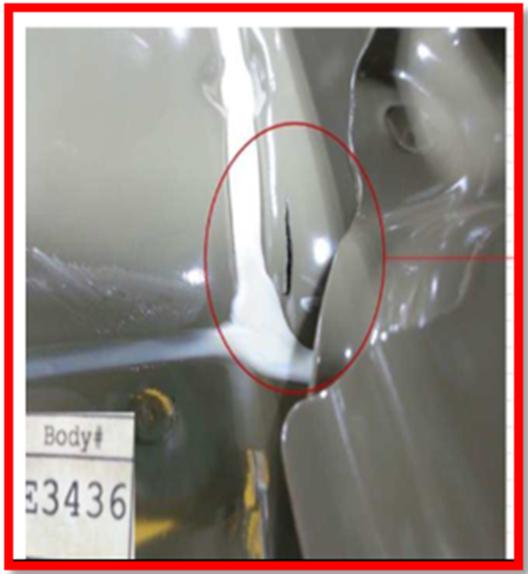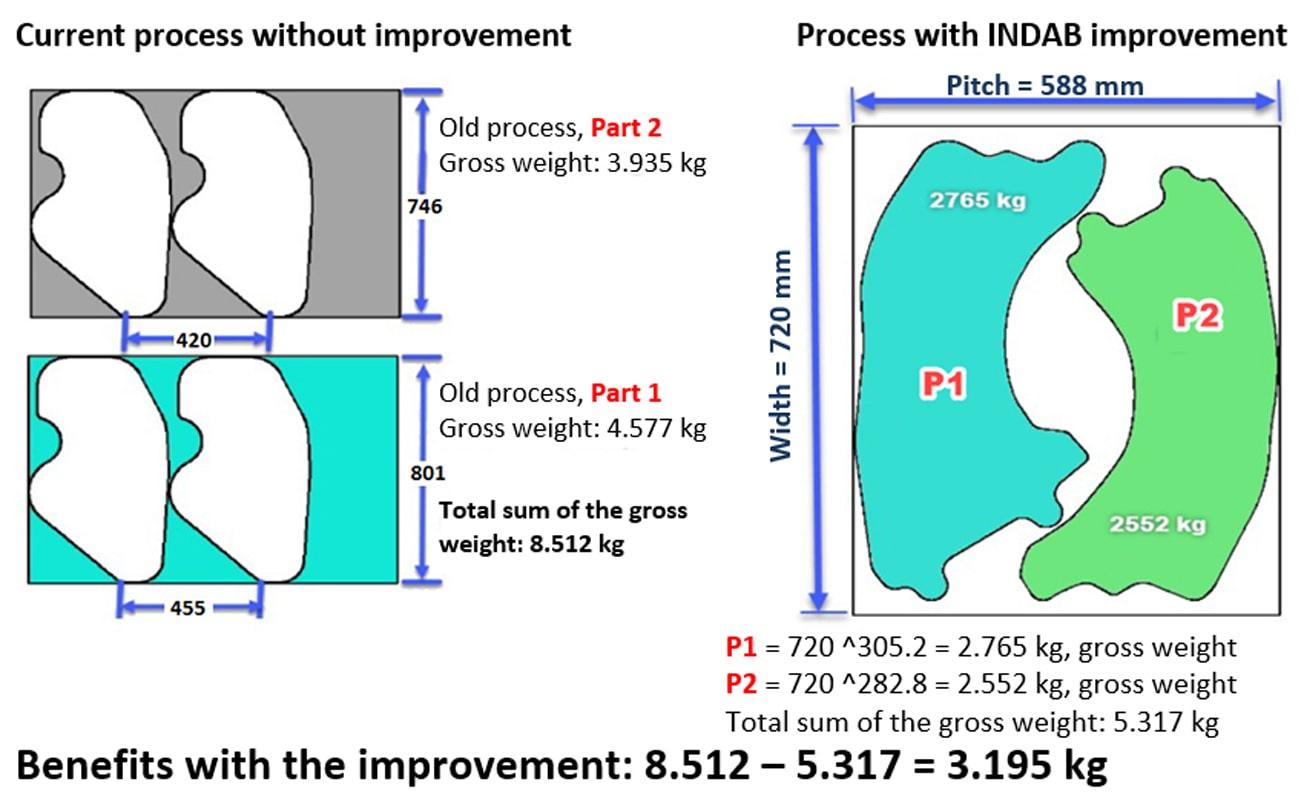Providing CAD/CAM services since 1998, Enginharia Sigma decided in 2008 to enter the stamping simulation field, aiming to promote the access to this technology to small and medium-sized companies.
This article deals with a service that was performed by Engenharia Sigma to their client INDAB, a stamping parts manufacturer, where Engenharia Sigma proposed an optimization process for their tool already in production, which presented a high scrap rate due to cracks and material overlap.
The first forming stage of the process was a drawing that required a pre-cut blank. This operation already presented a rupture, as shown in Figure 1.
Our previous experience led us to define a process in which drawing would be the standard forming operation for this type of part. However, after careful simulation analysis, we realized that a completely new process should be defined, where the first stage would be dedicated to forming the most critical region of the product.

Fig. 1: Rupture occurring in drawing
In addition to preserving the region, eliminating the crack and reducing the percentage of reject, the new forming process resulted in 38% savings in raw material. This is because the new process required a smaller pre-cut blank area due to the absence of a drawing head, sheet metal press area and drawbead, among other optimizations (Figure 2).
In addition, the studies developed allowed us to analyze improvements in the cutting, forming, and flanging balances, resulting in the reduction of an entire stage by reorganizing the processes in all operations.
Because we were optimizing a high production part, we calculated that the investment in this new set of tools would pay for itself in six months, after which it would start generating a considerable profit — besides improving the final product quality and drastically reducing the number of rejects (Figure 3).

Fig. 2: Comparing the previous and current processes
A process improvement study of this kind is a typical case for simulation since it is unfeasible to carry out in practice due to the high development cost, even with the adoption of prototyping (raw material, standard components, machining, adjustments, tryout, response time, etc.). This would in turn make the return on investment calculation difficult, involving an empirical process of many trials and adjustments.

Fig. 3: Comparing the previous and current processes

Fig. 4: The manufactured part using the initial process without simulation (left) and the new process with simulation (right).
To that end, a digital process model matching the real process simplifies this analysis, accelerating decision making and the calculation of return on investment without the need to produce a physical medium. This continuous improvement is a key factor in the efficiency and competitiveness of the segment, considering the case study described above.
Thus, we conclude that the use of digital models and process simulations can deliver tangible benefits across product and tooling development and for the daily improvement management of metal forming processes.













